- Accueil
- Pages cachées
- 18 DECEMBRE 2023 NEWS
18 DECEMBRE 2023 NEWS
INSTITUT SUPERIEUR D'ANTHROPOLOGIE
INSTITUT OF ANTHROPOLOGY
COURS ONLINE – COURS A DISTANCE
INSCRIPTIONS OUVERTES
REGISTER NOW
USA – 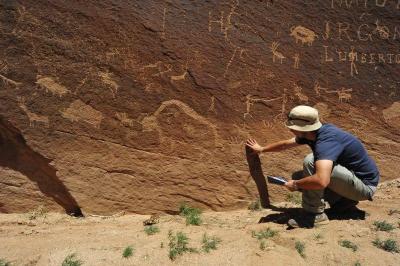
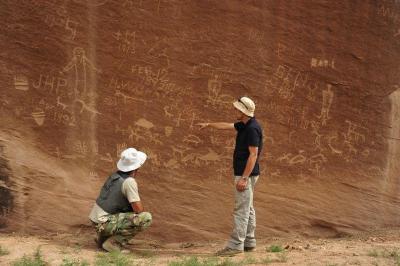
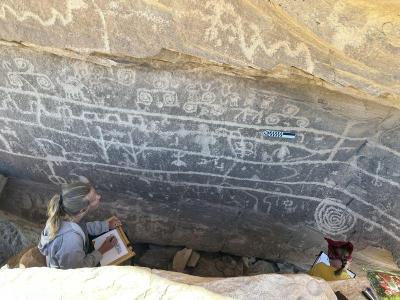 Castle Rock - Archaeologists from the Jagiellonian University, southern Poland, have made a significant discovery of ancient indigenous paintings and carvings in the US state of Colorado-Utah border. This Polish team has been exploring the area for over a decade, unraveling the mysteries of the 3000-year-old Pueblo culture. The research is carried out at the Castle Rock Pueblo settlement complex, located on the picturesque Mesa Verde plateau on the border between Colorado and Utah. These areas are popular not only with archaeologists but also with tourists, because of the famous Pre-Columbian settlements built in rock niches or carved into canyon walls as well as numerous works of rock art created by members of the ancient Pueblo culture, which dates back to nearly 3 thousand years ago and is still present almost exactly in the same area. “The agricultural Pueblo communities developed one of the most advanced Pre-Columbian cultures in North America. They perfected the craft of building multistorey stone houses, resembling medieval town houses or even later blocks of flats. The Pueblo people were also famous for their rock art, intricately ornamented jewellery, and ceramics bearing different motifs painted with a black pigment on white background’,” Prof Palonka said. The discoveries of his team include previously unknown huge galleries and petroglyphs dated to various historical periods. The oldest of them, showing warriors and shamans, are estimated to date back to as early as the 3rd century AD, the period known as the Basketmaker Era. They were engaged in farming and produced characteristic baskets and mats. Most petroglyphs come from the 12th and 13th century. These carvings vary in form, featuring complex geometric figures and spirals. The rock art frequently portrays shamans, warriors, bison, deer, and bighorn sheep, with some depicting hunting scenes. These carvings vary in form, featuring complex geometric figures and spirals. The rock art frequently portrays shamans, warriors, bison, deer, and bighorn sheep, with some depicting hunting scenes. In the 15th-17th century, when the area was inhabited by the Ute tribe, the rock panels started to feature large narrative hunting scenes showing bison, mountain sheep and deer hunts. In later centuries they also depicted horses, which reflected the events of the Spanish conquest, before which these animals were unknown to Native North Americans (they disappeared from this continent during the last ice age).
Castle Rock - Archaeologists from the Jagiellonian University, southern Poland, have made a significant discovery of ancient indigenous paintings and carvings in the US state of Colorado-Utah border. This Polish team has been exploring the area for over a decade, unraveling the mysteries of the 3000-year-old Pueblo culture. The research is carried out at the Castle Rock Pueblo settlement complex, located on the picturesque Mesa Verde plateau on the border between Colorado and Utah. These areas are popular not only with archaeologists but also with tourists, because of the famous Pre-Columbian settlements built in rock niches or carved into canyon walls as well as numerous works of rock art created by members of the ancient Pueblo culture, which dates back to nearly 3 thousand years ago and is still present almost exactly in the same area. “The agricultural Pueblo communities developed one of the most advanced Pre-Columbian cultures in North America. They perfected the craft of building multistorey stone houses, resembling medieval town houses or even later blocks of flats. The Pueblo people were also famous for their rock art, intricately ornamented jewellery, and ceramics bearing different motifs painted with a black pigment on white background’,” Prof Palonka said. The discoveries of his team include previously unknown huge galleries and petroglyphs dated to various historical periods. The oldest of them, showing warriors and shamans, are estimated to date back to as early as the 3rd century AD, the period known as the Basketmaker Era. They were engaged in farming and produced characteristic baskets and mats. Most petroglyphs come from the 12th and 13th century. These carvings vary in form, featuring complex geometric figures and spirals. The rock art frequently portrays shamans, warriors, bison, deer, and bighorn sheep, with some depicting hunting scenes. These carvings vary in form, featuring complex geometric figures and spirals. The rock art frequently portrays shamans, warriors, bison, deer, and bighorn sheep, with some depicting hunting scenes. In the 15th-17th century, when the area was inhabited by the Ute tribe, the rock panels started to feature large narrative hunting scenes showing bison, mountain sheep and deer hunts. In later centuries they also depicted horses, which reflected the events of the Spanish conquest, before which these animals were unknown to Native North Americans (they disappeared from this continent during the last ice age).
ALLEMAGNE – 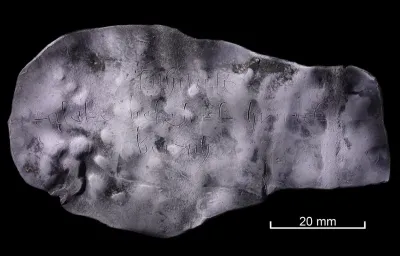 Rostock - According to an announcement by the Rostock City Hall, archaeologists have uncovered a devil curse written on a 15th century tablet in Rostock, Germany. The discovery was made during construction works for the Rostock town hall extension, where excavations of a medieval latrine revealed an inconspicuous piece of rolled up lead. Historical records indicate that a 14th-century double-gabled house once occupied the site, described as “one of the most beautiful of its kind in all of Northern Germany.” Upon unrolling the lead piece, the words “sathanas taleke belzebuk hinrik berith” became legible, directing a devil curse against a woman named Taleke and a man called Hinrik (Heinrich).The text is written in Blackletter, also known as Gothic minuscule, or Textura, which was used throughout Western Europe from the 12th century until the 17th century. Curse tablets were common in antiquity during the Greco-Roman periods, where curses written on thin sheets of lead (rolled up) were used to ask the gods, spirits, or the deceased to perform an action on a person or object, or to exert influence over the target of the curse. According to the researchers, the discovery in Rostock is incredibly rare, especially with an incantation towards belzebuk (Beelzebub), another name for the Devil (Satan). The mention of Berith in the curse refers to Baʿal Berith, which the Rabbinic tradition also equates with Beelzebub, the Lord of the Flies. Speculation surrounds the motive for the curse, suggesting intentions such as severing a relationship, feelings of unrequited love, jealousy, or aiming to bring misfortune upon both the named individuals. Excavations also revealed the remains of cellars and foundations dated to the 16th and 17th century, traces of a former waterway, and a 15th century lusterware blue bowl that originates from Valencia in Spain.
Rostock - According to an announcement by the Rostock City Hall, archaeologists have uncovered a devil curse written on a 15th century tablet in Rostock, Germany. The discovery was made during construction works for the Rostock town hall extension, where excavations of a medieval latrine revealed an inconspicuous piece of rolled up lead. Historical records indicate that a 14th-century double-gabled house once occupied the site, described as “one of the most beautiful of its kind in all of Northern Germany.” Upon unrolling the lead piece, the words “sathanas taleke belzebuk hinrik berith” became legible, directing a devil curse against a woman named Taleke and a man called Hinrik (Heinrich).The text is written in Blackletter, also known as Gothic minuscule, or Textura, which was used throughout Western Europe from the 12th century until the 17th century. Curse tablets were common in antiquity during the Greco-Roman periods, where curses written on thin sheets of lead (rolled up) were used to ask the gods, spirits, or the deceased to perform an action on a person or object, or to exert influence over the target of the curse. According to the researchers, the discovery in Rostock is incredibly rare, especially with an incantation towards belzebuk (Beelzebub), another name for the Devil (Satan). The mention of Berith in the curse refers to Baʿal Berith, which the Rabbinic tradition also equates with Beelzebub, the Lord of the Flies. Speculation surrounds the motive for the curse, suggesting intentions such as severing a relationship, feelings of unrequited love, jealousy, or aiming to bring misfortune upon both the named individuals. Excavations also revealed the remains of cellars and foundations dated to the 16th and 17th century, traces of a former waterway, and a 15th century lusterware blue bowl that originates from Valencia in Spain.
Devil curse found on medieval tablet in Rostock (heritagedaily.com)
TURQUIE – 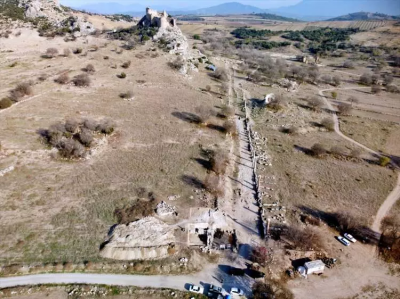
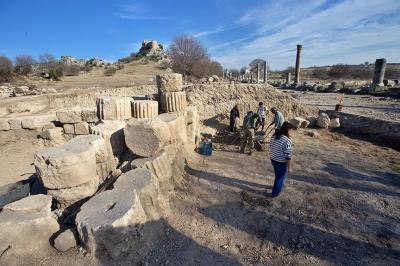 Kastabala - The ancient city of Kastabala is situated approximately 12 kilometers north-northwest of Osmaniye province, along the road from Cevdetiye Town to Karatepe Museum, in the middle of Kesmeburun, Bahçe and Kazmaca villages. During the excavations started at the end of the historical colonnaded street, ruins of the temple built by the Luwians, who are considered the oldest indigenous people of Anatolia, for their goddess Kubaba were discovered. “During the colonnaded street excavations, a building ruin, a temple, that we date to the Archaic period, that is, 540 BC, was unearthed. In Aramaic inscriptions located in the hinterland of Kastabala, the lands of Kastabala and Kubaba are mentioned. This building ruin we unearthed must be a temple belonging to the goddess Kubaba.” “The priests of this Archaic temple walked on hot coals with bare feet, without feeling any pain. These ruins, which provide extraordinary information to Anatolian archeology, made us very excited.” Demir stated that the excavations in the ancient city of Kastabala will continue to provide extraordinary information to Anatolian archaeology. Demir also gave information about Goddess Kubaba and said: “Goddess Kubaba is a local Anatolian goddess. The fact that we came across a temple of this goddess made us very excited. It is the first time that such a temple ruins belonging to Kubaba have been found in Anatolian archeology.” Kubaba usually was represented as a dignified figure draped in a long robe, either standing or seated and holding a mirror. Her character is poorly known. She is first documented in texts from Kanesh and Alalakh, though her main cult center was Carchemish.
Kastabala - The ancient city of Kastabala is situated approximately 12 kilometers north-northwest of Osmaniye province, along the road from Cevdetiye Town to Karatepe Museum, in the middle of Kesmeburun, Bahçe and Kazmaca villages. During the excavations started at the end of the historical colonnaded street, ruins of the temple built by the Luwians, who are considered the oldest indigenous people of Anatolia, for their goddess Kubaba were discovered. “During the colonnaded street excavations, a building ruin, a temple, that we date to the Archaic period, that is, 540 BC, was unearthed. In Aramaic inscriptions located in the hinterland of Kastabala, the lands of Kastabala and Kubaba are mentioned. This building ruin we unearthed must be a temple belonging to the goddess Kubaba.” “The priests of this Archaic temple walked on hot coals with bare feet, without feeling any pain. These ruins, which provide extraordinary information to Anatolian archeology, made us very excited.” Demir stated that the excavations in the ancient city of Kastabala will continue to provide extraordinary information to Anatolian archaeology. Demir also gave information about Goddess Kubaba and said: “Goddess Kubaba is a local Anatolian goddess. The fact that we came across a temple of this goddess made us very excited. It is the first time that such a temple ruins belonging to Kubaba have been found in Anatolian archeology.” Kubaba usually was represented as a dignified figure draped in a long robe, either standing or seated and holding a mirror. Her character is poorly known. She is first documented in texts from Kanesh and Alalakh, though her main cult center was Carchemish.
SUISSE – 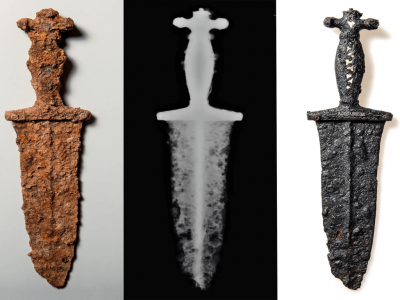 Graubünden - In Switzerland, a volunteer archaeologist and dental student Lucas Schmid discovered in 2019 a 2000-year-old silver and brass dagger. It was a vital clue in the story of a long-forgotten battle between the Roman Empire and tribal warriors. Lucas Schmid unearthed the dagger in the mountainous Graubünden region of Switzerland, an area believed to be the site of a lost battlefield where Imperial Roman soldiers fought Rhaetian warriors in approximately 15 BC. Now, a team of scientists and students have mapped a 2,000-year-old Roman battlefield representing the last stand of the Suanetes tribe, and the collapse of the region to the Roman Empire. Students and researchers from the universities of Basel and Zurich, together with volunteer detectorists, search a Roman battle site near the Crap-Ses gorge in canton Graubünden. Over the past two years, experts have unearthed thousands of Roman military artefacts littering a hillside in southeast Switzerland. Elegant columns, villas, amphitheaters, and other remains of ancient settlements can be found all over Switzerland, bearing witness to life under the Romans. But up to now, no battle sites had been identified and researched on Swiss territory. The Swiss researchers believe a 2,000-strong task force from the third, tenth, and twelfth Roman legions clashed with 500-1,000 local fighters at the top of the hill, which is located near the Crap-Ses gorge between the towns of Tiefencastel and Cunter.Schmid’s find led to the discovery of hundreds of other ancient artifacts. A new investigation of the site, run by a team from the Archaeological Service of Graubünden, the University of Basel (Switzerland), unearthed spearheads, lead slingshots, brooches, parts of shields, coins, and hobnails from Roman soldiers, Live Science report.
Graubünden - In Switzerland, a volunteer archaeologist and dental student Lucas Schmid discovered in 2019 a 2000-year-old silver and brass dagger. It was a vital clue in the story of a long-forgotten battle between the Roman Empire and tribal warriors. Lucas Schmid unearthed the dagger in the mountainous Graubünden region of Switzerland, an area believed to be the site of a lost battlefield where Imperial Roman soldiers fought Rhaetian warriors in approximately 15 BC. Now, a team of scientists and students have mapped a 2,000-year-old Roman battlefield representing the last stand of the Suanetes tribe, and the collapse of the region to the Roman Empire. Students and researchers from the universities of Basel and Zurich, together with volunteer detectorists, search a Roman battle site near the Crap-Ses gorge in canton Graubünden. Over the past two years, experts have unearthed thousands of Roman military artefacts littering a hillside in southeast Switzerland. Elegant columns, villas, amphitheaters, and other remains of ancient settlements can be found all over Switzerland, bearing witness to life under the Romans. But up to now, no battle sites had been identified and researched on Swiss territory. The Swiss researchers believe a 2,000-strong task force from the third, tenth, and twelfth Roman legions clashed with 500-1,000 local fighters at the top of the hill, which is located near the Crap-Ses gorge between the towns of Tiefencastel and Cunter.Schmid’s find led to the discovery of hundreds of other ancient artifacts. A new investigation of the site, run by a team from the Archaeological Service of Graubünden, the University of Basel (Switzerland), unearthed spearheads, lead slingshots, brooches, parts of shields, coins, and hobnails from Roman soldiers, Live Science report.
CHINE –  Ningbo - Archaeologists have recently found an expanse of prehistoric rice paddy, dating back about 5,300 to 5,500 years, in east China's Zhejiang Province. This was reported by The Xinhua News Agency. Covering about 1,000 square meters, the ancient paddy field was discovered in the core area of the Neolithic Hemudu culture, where human activity was frequent, said the Ningbo municipal research academy of cultural heritage management. Three ridges, nine pits and some remains of rice and weeds were discovered during the excavation work. A ditch for irrigation and drainage was also unearthed at the site, along with a road believed to have connected surrounding residences with the paddy field. The pits are likely to have been formed during the renovation of the ridges and the ditch in prehistoric time, said the researchers. The new findings at the site help reveal a complete rice-field system at that time, providing important research materials for studies on the rice-planting agricultural mode in the local plain area, according to the research academy. Hemudu culture, named after Hemudu Township of Ningbo where its ruins were first discovered, belongs to a prehistoric society along the lower reaches of the Yangtze River and is known for its rice-planting agriculture and unique stilt-style architecture.
Ningbo - Archaeologists have recently found an expanse of prehistoric rice paddy, dating back about 5,300 to 5,500 years, in east China's Zhejiang Province. This was reported by The Xinhua News Agency. Covering about 1,000 square meters, the ancient paddy field was discovered in the core area of the Neolithic Hemudu culture, where human activity was frequent, said the Ningbo municipal research academy of cultural heritage management. Three ridges, nine pits and some remains of rice and weeds were discovered during the excavation work. A ditch for irrigation and drainage was also unearthed at the site, along with a road believed to have connected surrounding residences with the paddy field. The pits are likely to have been formed during the renovation of the ridges and the ditch in prehistoric time, said the researchers. The new findings at the site help reveal a complete rice-field system at that time, providing important research materials for studies on the rice-planting agricultural mode in the local plain area, according to the research academy. Hemudu culture, named after Hemudu Township of Ningbo where its ruins were first discovered, belongs to a prehistoric society along the lower reaches of the Yangtze River and is known for its rice-planting agriculture and unique stilt-style architecture.
Over 5,300-year-old paddy field discovered in east China | Ukrainian news (ukranews.com)
EGYPTE – 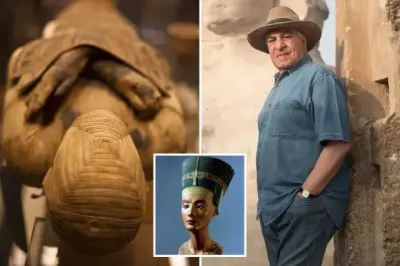 - Zahi Hawass, Egypt's former minister of state for antiquities affairs, spoke to The U.S. Sun about the huge find. "There is two things that I'm doing about Queen Nefertiti," he said. "The first one, it's a DNA project that I'm working on right now to search for the mummy of Queen Nefertiti." Hawass continued: "We have mummies of queens that have no names and we're working right now to identify one of these mummies that has no names to be Queen Nefertiti." The archeology expert revealed that of the two mummies in question, one has no head. "One could be the mummy of Nefertiti and the other one could be the mummy of her daughter Ankhesenamun, the queen of Tutankhamen," he said. "In four months from now, we'll be able to make the announcement of the discovery of the mummy." Queen Nefertiti was the wife of Pharaoh Amenhotep IV and lived during the 14th century BC.
- Zahi Hawass, Egypt's former minister of state for antiquities affairs, spoke to The U.S. Sun about the huge find. "There is two things that I'm doing about Queen Nefertiti," he said. "The first one, it's a DNA project that I'm working on right now to search for the mummy of Queen Nefertiti." Hawass continued: "We have mummies of queens that have no names and we're working right now to identify one of these mummies that has no names to be Queen Nefertiti." The archeology expert revealed that of the two mummies in question, one has no head. "One could be the mummy of Nefertiti and the other one could be the mummy of her daughter Ankhesenamun, the queen of Tutankhamen," he said. "In four months from now, we'll be able to make the announcement of the discovery of the mummy." Queen Nefertiti was the wife of Pharaoh Amenhotep IV and lived during the 14th century BC.
CHINE – x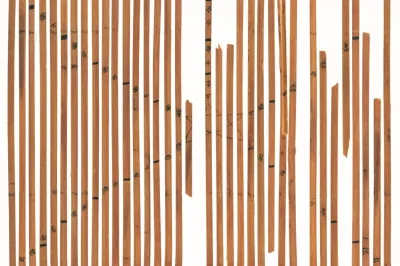 - An archaeology team from Tsinghua University in Beijing has revealed something astonishing: ancient Chinese musicians and philosophers had these five tones recorded thousands of years ago. And when written, they formed a pentagram. This discovery, based on bamboo records, is the first to directly link the pentagram with sound. The pentagram, or five-pointed star, is a mysterious symbol which has profound philosophical and religious significance to a number of different civilisations around the world. From around 300–150BC, it served as the symbol of Jerusalem. Archaeological studies have discovered pentagram patterns on Sumerian pottery in the ancient city of Ur in Mesopotamia dating from around 3000BC. In the same period, about 5,000 years ago, the earliest known pentagram graphic also appeared in China. In 2019, for example, a depiction of a regular pentagram on the bottom of a ceramic plate was found by archaeologists in Tomb 204 at the Liangzhu archaeological site in the Yangtze River region. The Liangzhu culture was the earliest root of the Chinese civilisation. There are different theories as to the origin of the pentagram symbol. Some academics think ancient Chinese artisans drew inspiration from the shapes of flowers in nature, while others believe it may be connected to ancient observations of the trajectory of Venus. this latest Chinese archaeological discovery has given the ancient symbol a new meaning – associating it with melody. In 2008, Tsinghua University acquired around 2,500 precious Warring States bamboo slips – Chinese texts written on strips of bamboo. The Warring States period, roughly from 475-221BC, came just before the first unified empire in Chinese history, the Qin dynasty. Since 2010, Tsinghua University has unveiled research results annually from the bamboo slips, and on December 10, they released the findings from the 13th batch, comprising five bamboo books. It is the first time the research has involved music-related literature in the Warring States texts. One of the musical texts, titled “Wu Yin Tu” (Diagram of the Five Tones), is made up of 35 long bamboo strips. When placed together, a pentagram-shaped pattern emerges at the centre of the layout. Following each point of the pentagram are characters representing the names of the five musical scales, arranged in a line extending in five directions. “The five characters on this pentagram correspond to the Chinese traditional five basic elements, or “Wu Xing”, that is, metal, wood, water, fire and earth,” Kong said, adding that it is a musical theory that is unique to China. However, the music methodology about scales is universal. Musical scales with five notes per octave, known as pentatonic scales, were developed independently by many ancient civilisations and are still used in various musical styles to this day.
- An archaeology team from Tsinghua University in Beijing has revealed something astonishing: ancient Chinese musicians and philosophers had these five tones recorded thousands of years ago. And when written, they formed a pentagram. This discovery, based on bamboo records, is the first to directly link the pentagram with sound. The pentagram, or five-pointed star, is a mysterious symbol which has profound philosophical and religious significance to a number of different civilisations around the world. From around 300–150BC, it served as the symbol of Jerusalem. Archaeological studies have discovered pentagram patterns on Sumerian pottery in the ancient city of Ur in Mesopotamia dating from around 3000BC. In the same period, about 5,000 years ago, the earliest known pentagram graphic also appeared in China. In 2019, for example, a depiction of a regular pentagram on the bottom of a ceramic plate was found by archaeologists in Tomb 204 at the Liangzhu archaeological site in the Yangtze River region. The Liangzhu culture was the earliest root of the Chinese civilisation. There are different theories as to the origin of the pentagram symbol. Some academics think ancient Chinese artisans drew inspiration from the shapes of flowers in nature, while others believe it may be connected to ancient observations of the trajectory of Venus. this latest Chinese archaeological discovery has given the ancient symbol a new meaning – associating it with melody. In 2008, Tsinghua University acquired around 2,500 precious Warring States bamboo slips – Chinese texts written on strips of bamboo. The Warring States period, roughly from 475-221BC, came just before the first unified empire in Chinese history, the Qin dynasty. Since 2010, Tsinghua University has unveiled research results annually from the bamboo slips, and on December 10, they released the findings from the 13th batch, comprising five bamboo books. It is the first time the research has involved music-related literature in the Warring States texts. One of the musical texts, titled “Wu Yin Tu” (Diagram of the Five Tones), is made up of 35 long bamboo strips. When placed together, a pentagram-shaped pattern emerges at the centre of the layout. Following each point of the pentagram are characters representing the names of the five musical scales, arranged in a line extending in five directions. “The five characters on this pentagram correspond to the Chinese traditional five basic elements, or “Wu Xing”, that is, metal, wood, water, fire and earth,” Kong said, adding that it is a musical theory that is unique to China. However, the music methodology about scales is universal. Musical scales with five notes per octave, known as pentatonic scales, were developed independently by many ancient civilisations and are still used in various musical styles to this day.
GRECE – Vergina - Alexander the Great died in 323 BC, in Babylon, and the tomb was directed to return to his birthplace, the kingdom of Macedonia in Greece. However, it is said that Ptolemy I Soter, one of Alexander’s four main generals, intercepted the tomb and placed in Alexandria. Since then, there have been many theories as to if it moved. Archeologists have searched but not yet found the tomb of Alexander and the direction begins to shift back to Vergina, Greece. World-renowned University of Sorbonne historian Helen Glykatzi-Ahrweiler, in a recent interview, argued that the tomb of Alexander the Great is most likely in Vergina, Greece. Ahrweiler argues the tomb excavated by Manolis Andronikos and identified with Phillip II of Macedon is in fact, Alexander’s. This diverts from the popular opinion of the tomb being in Alexandria. In King Phillip’s tomb, a hunting depiction is found on the pediment (Greek:Αέτωμα), with Alexander the Great in the middle. However, there are two more interesting details found in the Phillip II’s alleged tomb. In the deathbed, the images of a Satyr, a male deity, and Greek god Dionysus are found. For the connection to the Satyr, Ahrweiler relates the story conquering of Phoenician capital Tyre. of Alexander. During his extensive campaigns, Alexander encountered formidable resistance when he arrived in Tyre (Tyros in Greek). In a moment of doubt, Alexander, according to legend, dreamed of a satyr (Satyros in Greek). As an Aristotelian, he saw this as an omen – a play on words in ancient Greek where “Sa-Tyros” sounded like “Tyros is yours.” This encouraged Alexander to stay and successfully capture Tyre. In King Phillip’s tomb, a hunting depiction is found on the pediment (Greek:Αέτωμα), with Alexander the Great in the middle. However, there are two more interesting details found in the Phillip II’s alleged tomb. In the deathbed, the images of a Satyr, a male deity, and Greek god Dionysus are found. For the connection to the Satyr, Ahrweiler relates the story conquering of Phoenician capital Tyre. of Alexander. During his extensive campaigns, Alexander encountered formidable resistance when he arrived in Tyre (Tyros in Greek). In a moment of doubt, Alexander, according to legend, dreamed of a satyr (Satyros in Greek). As an Aristotelian, he saw this as an omen – a play on words in ancient Greek where “Sa-Tyros” sounded like “Tyros is yours.” This encouraged Alexander to stay and successfully capture Tyre. In the context of Alexander’s life, the significance of Greek god Dionysus and satyr imagery is profound. Dionysus was not only a wine deity, but also a symbol of the divide between civilization and the wild, embodying the spirit of conquest and change. The satyr, who was frequently associated with Dionysus, represented unbridled nature and freedom. These images on the tomb may represent Alexander’s dual nature as a civilizer and a conqueror, as a man who straddled the known and unknown worlds. Therefore, according to Ahrweiler, the two images of a Satyr and Dionysus discovered in the Macedonian tomb are more related to Alexander’s story than to King Philip’s. She notes that the findings of American anthropologists who discovered a skeleton near the tomb with a leg injury similar to that sustained by Philip II give credibility to her theory. Furthermore, this skeleton did not fit the armor discovered in the tomb, which closely resembled the armor worn by Alexander at the Battle of Gaugamela, as depicted in the famous Pompeii mosaic. Even more surprisingly, traces of a mineral known as “chrysocolla” were discovered on the skeleton, a substance used in Egyptian mummification, complicating the mystery even further.
Vergina - Alexander the Great died in 323 BC, in Babylon, and the tomb was directed to return to his birthplace, the kingdom of Macedonia in Greece. However, it is said that Ptolemy I Soter, one of Alexander’s four main generals, intercepted the tomb and placed in Alexandria. Since then, there have been many theories as to if it moved. Archeologists have searched but not yet found the tomb of Alexander and the direction begins to shift back to Vergina, Greece. World-renowned University of Sorbonne historian Helen Glykatzi-Ahrweiler, in a recent interview, argued that the tomb of Alexander the Great is most likely in Vergina, Greece. Ahrweiler argues the tomb excavated by Manolis Andronikos and identified with Phillip II of Macedon is in fact, Alexander’s. This diverts from the popular opinion of the tomb being in Alexandria. In King Phillip’s tomb, a hunting depiction is found on the pediment (Greek:Αέτωμα), with Alexander the Great in the middle. However, there are two more interesting details found in the Phillip II’s alleged tomb. In the deathbed, the images of a Satyr, a male deity, and Greek god Dionysus are found. For the connection to the Satyr, Ahrweiler relates the story conquering of Phoenician capital Tyre. of Alexander. During his extensive campaigns, Alexander encountered formidable resistance when he arrived in Tyre (Tyros in Greek). In a moment of doubt, Alexander, according to legend, dreamed of a satyr (Satyros in Greek). As an Aristotelian, he saw this as an omen – a play on words in ancient Greek where “Sa-Tyros” sounded like “Tyros is yours.” This encouraged Alexander to stay and successfully capture Tyre. In King Phillip’s tomb, a hunting depiction is found on the pediment (Greek:Αέτωμα), with Alexander the Great in the middle. However, there are two more interesting details found in the Phillip II’s alleged tomb. In the deathbed, the images of a Satyr, a male deity, and Greek god Dionysus are found. For the connection to the Satyr, Ahrweiler relates the story conquering of Phoenician capital Tyre. of Alexander. During his extensive campaigns, Alexander encountered formidable resistance when he arrived in Tyre (Tyros in Greek). In a moment of doubt, Alexander, according to legend, dreamed of a satyr (Satyros in Greek). As an Aristotelian, he saw this as an omen – a play on words in ancient Greek where “Sa-Tyros” sounded like “Tyros is yours.” This encouraged Alexander to stay and successfully capture Tyre. In the context of Alexander’s life, the significance of Greek god Dionysus and satyr imagery is profound. Dionysus was not only a wine deity, but also a symbol of the divide between civilization and the wild, embodying the spirit of conquest and change. The satyr, who was frequently associated with Dionysus, represented unbridled nature and freedom. These images on the tomb may represent Alexander’s dual nature as a civilizer and a conqueror, as a man who straddled the known and unknown worlds. Therefore, according to Ahrweiler, the two images of a Satyr and Dionysus discovered in the Macedonian tomb are more related to Alexander’s story than to King Philip’s. She notes that the findings of American anthropologists who discovered a skeleton near the tomb with a leg injury similar to that sustained by Philip II give credibility to her theory. Furthermore, this skeleton did not fit the armor discovered in the tomb, which closely resembled the armor worn by Alexander at the Battle of Gaugamela, as depicted in the famous Pompeii mosaic. Even more surprisingly, traces of a mineral known as “chrysocolla” were discovered on the skeleton, a substance used in Egyptian mummification, complicating the mystery even further.
Alexander the Great's Tomb is Located in Greece, Sorbonne Historian Claims - GreekReporter.com
